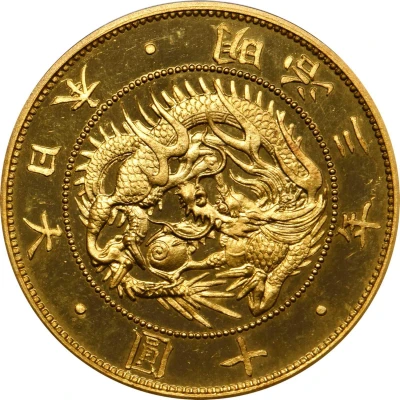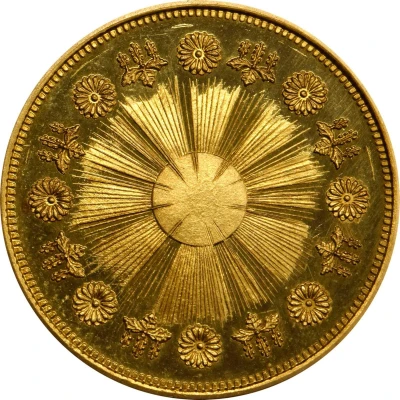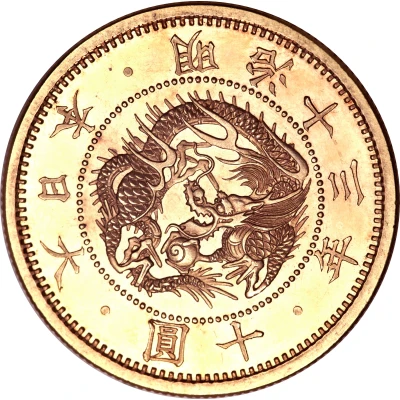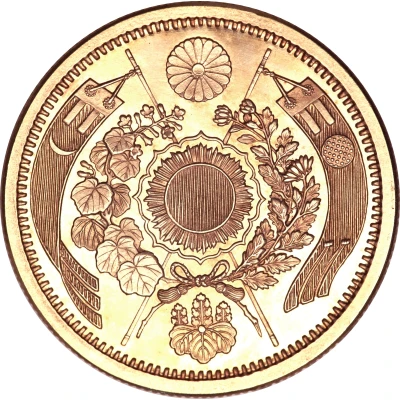


© Stacks Bowers
10 Yen - Meiji Pattern
3 (1870) year| Gold | - | - |
| Issuer | Japan |
|---|---|
| Emperor | Meiji (1867-1912) |
| Type | Pattern |
| Year | 3 (1870) |
| Calendar | Japanese - Meiji era |
| Value | 10 Yen (10 JPY) |
| Currency | Yen (1871-date) |
| Composition | Gold |
| Shape | Round |
| Technique | Milled |
| Orientation | Medal alignment ↑↑ |
| Demonetized | Yes |
| Updated | 2024-10-05 |
| Numista | N#402989 |
|---|---|
| Rarity index | 100% |
Reverse
Sunburst surrounded by eight 5-7 paulownia seals and seven chrysanthemum seals, alternating each other.
Engraver: Leonard Charles Wyon
Edge
Plain
Interesting fact
The Pattern 10 Yen - Meiji (Pattern) 3 (1870) coin was designed by a British engraver named George William de Saulles, who was hired by the Japanese government to create a new currency for the country. De Saulles' design features a portrait of Emperor Meiji on the obverse (front) side of the coin, and a dragon on the reverse (back) side. The coin was minted in gold, and it is considered to be one of the rarest and most valuable coins in the world, with only a few examples known to exist.



